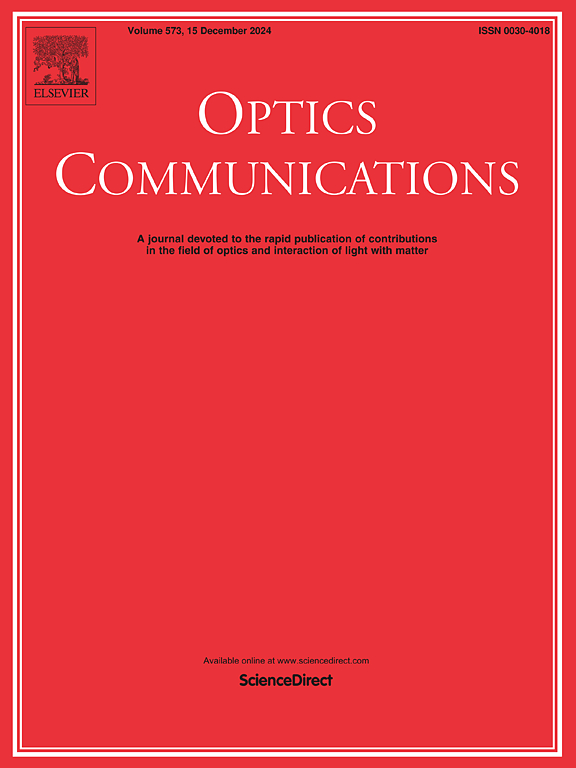Fast path loss calculation of W2A-OWC based on the grid cell collective photon refraction method
IF 2.2
3区 物理与天体物理
Q2 OPTICS
引用次数: 0
Abstract
The simulation speed of traditional Monte Carlo (MC) methods for water-to-air (W2A) optical wireless communication (OWC) is limited by the dynamic property of sea surfaces and the large number of photons required. This study aims to accelerate the simulation process by analyzing the channel characteristics. Two major optimizations of the MC algorithm for W2A-OWC are introduced. Firstly, the bicubic interpolation method is introduced to enhance the resolution of sea surface modeling. Secondly, the sea surface height difference iteration method (SSHIM) is proposed to calculate photon refraction points rapidly. Based on these advances, this study proposes an innovative path loss simulation method based on the grid cell collective photon refraction (GCCPR) method. The proposed method is verified in three simulation scenarios: sea surface energy distribution, receiving plane energy distribution and received optical power (ROP). The highest Pearson correlation coefficient between the proposed method and MC simulation is 89.62 % for the receiving plane energy distribution, and the calculation speed of the proposed method can be more than 1000 times faster than the MC simulation. Finally, the feasibility of the proposed method is validated through experiments with regular and irregular two-dimensional (2D) waves. In a stable environment with only wave fluctuations, the proposed method can quickly calculate the change of energy distribution on the receiving plane caused by sea surface fluctuations.
基于网格胞集体光子折射法的W2A-OWC快速路径损耗计算
传统的蒙特卡罗(MC)方法对水-空气(W2A)光无线通信(OWC)的仿真速度受到海面动态特性和所需光子量大的限制。本研究旨在通过分析信道特性来加快仿真过程。介绍了W2A-OWC的MC算法的两个主要优化。首先,引入双三次插值方法,提高海面模拟的分辨率;其次,提出了快速计算光子折射点的海面高差迭代法(SSHIM)。在此基础上,本研究提出了一种基于网格细胞集体光子折射(GCCPR)方法的路径损耗模拟方法。在海面能量分布、接收面能量分布和接收光功率(ROP)三种仿真场景下对该方法进行了验证。接收面能量分布与MC模拟的Pearson相关系数最高为89.62%,计算速度比MC模拟快1000倍以上。最后,通过规则波和不规则波实验验证了该方法的可行性。在只有波浪波动的稳定环境下,该方法可以快速计算海面波动引起的接收面上能量分布的变化。
本文章由计算机程序翻译,如有差异,请以英文原文为准。
求助全文
约1分钟内获得全文
求助全文
来源期刊

Optics Communications
物理-光学
CiteScore
5.10
自引率
8.30%
发文量
681
审稿时长
38 days
期刊介绍:
Optics Communications invites original and timely contributions containing new results in various fields of optics and photonics. The journal considers theoretical and experimental research in areas ranging from the fundamental properties of light to technological applications. Topics covered include classical and quantum optics, optical physics and light-matter interactions, lasers, imaging, guided-wave optics and optical information processing. Manuscripts should offer clear evidence of novelty and significance. Papers concentrating on mathematical and computational issues, with limited connection to optics, are not suitable for publication in the Journal. Similarly, small technical advances, or papers concerned only with engineering applications or issues of materials science fall outside the journal scope.
 求助内容:
求助内容: 应助结果提醒方式:
应助结果提醒方式:


